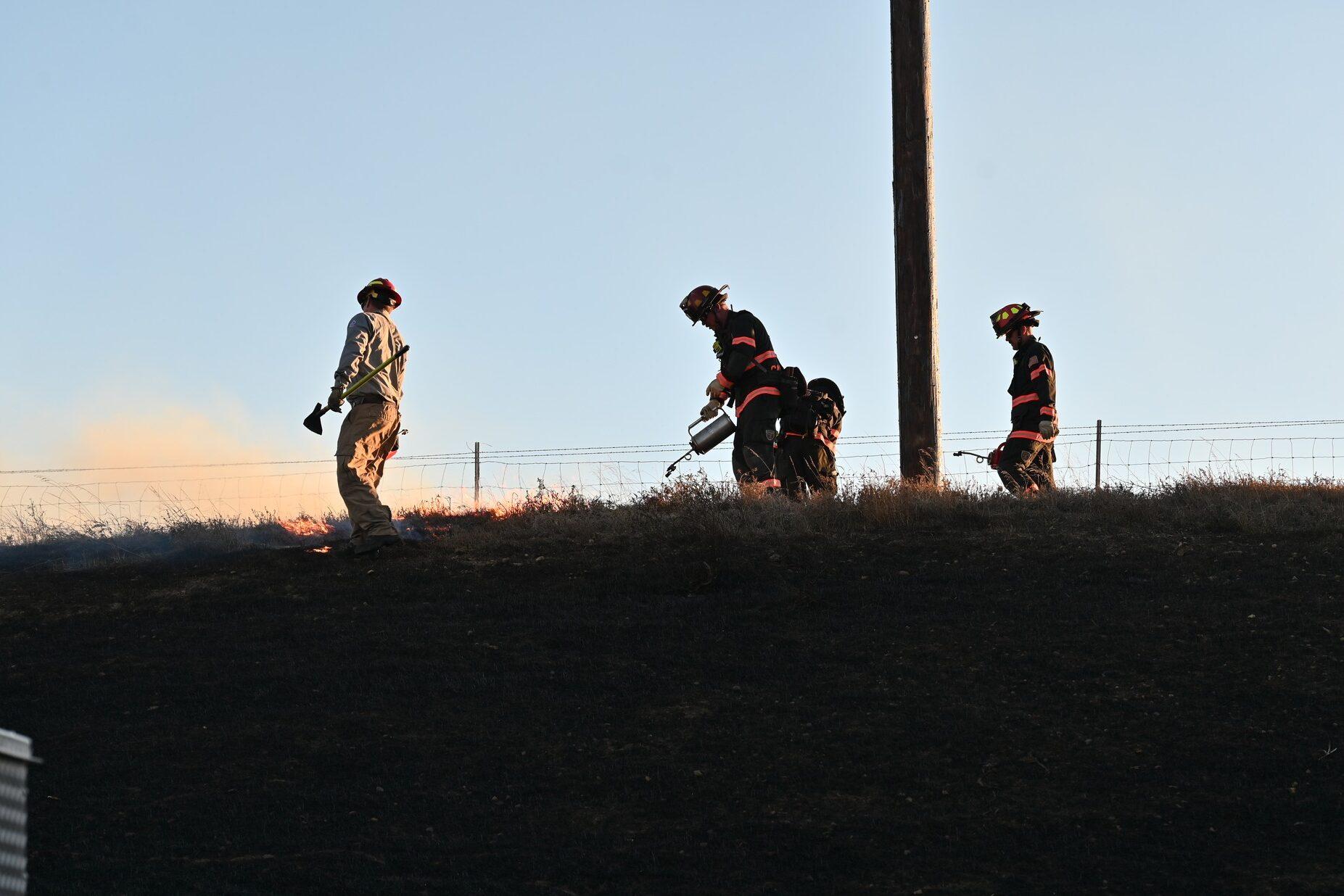
Editor's Note: This story is part of a long term reporting project from CPR News that explores how climate change is affecting Colorado, what's being done to address those changes and more.
Nature throws a lot of curve balls when you’re above 10,000 feet. So imagine how tough you need to be to collect water samples every week in the same spot for 35 years.
Jill Baron knows.
A U.S. Geological Survey ecologist who also works with Colorado State University, Baron has spent much of her professional life collecting data and writing research papers on the Loch Vale Watershed, which includes two glaciers, lakes and streams inside Rocky Mountain National Park.
On an early June day, Baron and her research team faced 25 mph winds as they hauled backpacks full of equipment up to the Loch, a lake about 2.8 miles from the Glacier Gorge Trailhead. Snowcapped mountains towered in the distance as Baron and a CSU lab technician trudged through the icy water in waders to gather testing samples.
"There’s never a bad day up here,” said Baron. “Even when the weather is terrible. And you’re cold. And you never get tired because it’s always different."

Back in 1982, Baron set up instruments at the Loch Vale Watershed to measure weather and stream flows. When she first started, she said climate change wasn’t front and center.
"It was acid rain. I think the sheer excitement of discovery got a lot of people into studying acid rain,” she said.
But instead of acid rain, she found nitrogen was falling out of the sky into the park. It was causing changes to the ecosystem.
Over the decades Baron has become a small-but-mighty character in the ecology world. An inch over 5 feet tall, she none the less has chosen a branch of science that’s physically demanding. It takes a lot of work to collect field samples every week. She's even enlisted her two kids.
The long-term data she's gathered at Loch Vale Watershed is highly valued because it’s been gathered over such a long period of time. Most recently, the Watershed contributed data to a 2015 scientific paper on global lakes and climate change. It found lakes are warming faster compared to air or ocean temperatures. The paper projected a 20 percent boost in lake algae around the globe in the next century.
"When you warm the water, it makes it easier for algae and bacteria to take up nutrients. So you get more nutrient cycling, you get more productivity,” said Baron.

Algae has also come to the Loch and Sky Pond. Baron says she and her team first noticed it in 2010. This year, it’s not extremely visible from the water surface. Scientists have found large algal blooms just underneath the water’s surface.
But they aren't ready to completely chalk it up to climate change. They've launched a research project to study what's going on.
"It’s so very important to know whether it’s climate change, or honestly global change, which is the interaction of climate warming with all the other factors that could affect algae,” Baron said.
Hub Of Climate Change Research
In Rocky Mountain National Park, the Loch Vale Watershed Project is one of several critical scientific inquiries into climate change. The park has seen a 3.4 degree increase in average annual temperature over the last century. Snow melts two to three weeks earlier than it has in the past. Those changes can cause a cascade of impacts on plants and wildlife.
“I think the science is very clear that humans are causing the planet to warm, and that is driving climate change,” said National Park Service Director Jonathan Jarvis, who calls climate change the biggest challenge facing the NPS in its second century.
“National Parks are often located in relatively extreme environments, high mountains, deep valleys, alpine meadows,” he said. “And so the National Parks are both impacted by this, but also maybe some of the most impacted environments that we have in the country.”

In Rocky Mountain National Park, one poster child is the American pika. It’s a small mammal whose alpine habitat has decreased with climate change. A five-year research project led by National Park Service researchers predicted Rocky Mountain National Park pikas could be extinct by the year 2100. That’s in contrast to other parks like Grand Teton National Park in Wyoming, where pikas are expected to survive.
Then there’s a small chicken sized bird called the white-tailed ptarmigan. Scientists know the bird’s population is declining inside Rocky Mountain National Park in contrast to another group of these birds on Mountain Evans. They’re asking deeper and deeper questions about why that Rocky Mountain group is on the decline. One recent study suggests that reproduction rates aren’t impacted by climate change. So it must be something else.
Park managers have also seen the mountain pine beetle affect or kill about 90 percent of forested areas inside Rocky Mountain National Park. The beetle’s range is larger than previous attacks, and it expands into higher elevations compared to others. Recent evidence also points toward the impact of the spruce beetle on Rocky Mountain’s forests.
Meantime, climate change is expected to bring hotter and more intense wildfires to Rocky Mountain National Park. And the fire season is growing longer. In December 2012, the park saw a high elevation winter fire, which is unprecedented in its history.
Added together, the changes present unparalleled management challenges, said NPS Director Jarvis. In some instances like melting glaciers in Glacier National Park, downstream waters will become warmer. That could change fish species, and the NPS may have to accept this fact, said Jarvis. That’s in sharp contrast to agency policies practiced during its first century of operation, which were more resistant to change.
Jarvis said sometimes the Park Service can and should be proactive to prevent climate change impacts. Take for instance pine beetles in Rocky Mountain National Park.
“We have to begin to anticipate and maybe even have to be more aggressive about replanting certain tree types in order to retain that forest type than perhaps we were in the past,” Jarvis said. “So there is a little bit more requirement for management action in advance of this kind of thing.”
Hope For More Resilience
Previous research by Baron and her team helped guide air quality decisions inside Rocky Mountain National Park. Several years ago, they found high concentrations of nitrogen in the park connected to coal-fired power plants and agriculture. Too much of it can act as a fertilizer for some plants, and change the ecosystem.
Now the park, along with state and federal agencies, have a plan to reduce nitrogen.

Ultimately Baron says she’s hopeful about what she might discover in the algae experiments. And if there are more causes than just climate change--that's something park managers can fix.
"We need to be thinking far ahead about how you conserve these species. How you protect these lakes how you restore systems so that they're more resilient to the kinds of climate related phenomenon that we're going to see,” Baron said.
For Baron, the holy grail is scientific research that can inform how park managers care for Rocky Mountain in the future. That research is exhausting and time consuming. It's one reason why Baron says this project is her third child. It's a lifetime of work. But she says it's an investment well worth the effort.









